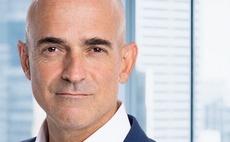
Asian family offices seek greater PE funds exposure - survey
More than half of family offices in Asia Pacific plan to increase their exposure to private equity funds next year, according to a survey conducted by Raffles Family Office and Campden Wealth.
Of the 72 participating family offices that originate from the region, 57% said they wanted to ramp up fund commitments, while 50% expressed a desire to invest more in venture capital and 39% would like to do more direct private equity deals. This compares to 47%, 40%, and 41% on the same topics among family offices globally.
Across 17 asset classes, Asian family offices are more open to increasing exposure rather than holding steady in just five: private equity funds, venture capital, direct real estate investments, developed market equities, and developing market equities. Cash and special purpose acquisition companies (SPACs) are the only asset classes where sellers outnumber buyers.
The average Asian family office portfolio is 16% bonds, 32% equities, 10% direct private equity investments, 7% private equity fund investments, 6% venture capital, 3% private debt, 11% real estate, 7% other alternatives, and 7% cash. Allocations to SPACs and crypto are negligible.
In 2021, private equity funds, direct private equity, and venture capital were the best-performing asset classes, returning 15%, 13%, and 15%, respectively. The weighted average return was 10%.
The private equity portfolio split in 2021 was 44% funds, 8% fund-of-funds, and 47% direct. Within directs, the family office took an active management role for 26% of assets. Half of respondents said directly held, actively managed assets outperformed expectations, compared to 17% for funds, 0% for fund-of-funds, and 8% for passive direct investments.
Growth equity and venture capital are the most popular private equity asset classes among Asian family offices. Two-thirds of respondents have exposure to growth funds, while approximately half are in venture funds and venture and growth direct investments.
On average, family offices have the capacity to work on eight deals in parallel. More than two-thirds of direct investments comprise minority stakes in companies or co-investments with GPs. A family office's own networks and those of industry peers are the most active sourcing channels, followed by advisor networks and friends and family.
Seven in 10 respondents said their main investment objective is wealth preservation or balanced return as opposed to pursuing growth. Asked to identify the biggest risk to financial markets, 88% pointed to inflation, followed by rising interest rates and geopolitical risk. Increasing real estate and equities exposure are the most popular inflation hedges.
"Family offices have started to hedge against inflation, with slightly over half looking for investment opportunities for diversification, and a growing number interested in increasing their allocation in direct investments in private equity," said Chi-man Kwan, CEO and co-founder of Raffles Family Office, a Hong Kong-headquartered multi-family office, in a statement.
Latest News
Asian GPs slow implementation of ESG policies - survey
Asia-based private equity firms are assigning more dedicated resources to environment, social, and governance (ESG) programmes, but policy changes have slowed in the past 12 months, in part due to concerns raised internally and by LPs, according to a...
Singapore fintech start-up LXA gets $10m seed round
New Enterprise Associates (NEA) has led a USD 10m seed round for Singapore’s LXA, a financial technology start-up launched by a former Asia senior executive at The Blackstone Group.
India's InCred announces $60m round, claims unicorn status
Indian non-bank lender InCred Financial Services said it has received INR 5bn (USD 60m) at a valuation of at least USD 1bn from unnamed investors including “a global private equity fund.”
Insight leads $50m round for Australia's Roller
Insight Partners has led a USD 50m round for Australia’s Roller, a venue management software provider specializing in family fun parks.








